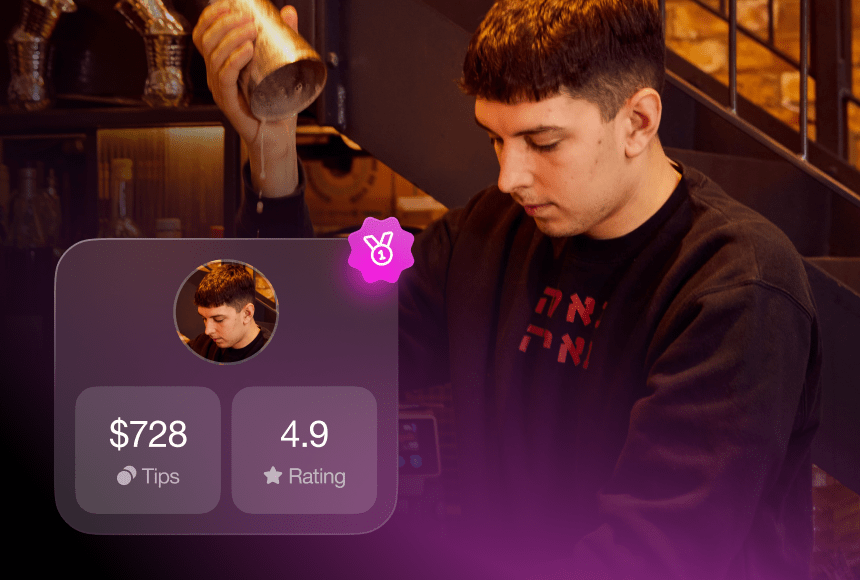
Critical Metrics Every Modern Restaurant Should Monitor
Why Key Performance Indicators (KPIs) Matter More Than Ever
In today’s fast-paced restaurant world, gut instincts and intuition can only get you so far. You may sense it’s been a busy week or that your customers are loving the new avocado toast, but do you know exactly how these translate into profits or operational efficiency? That’s where Key Performance Indicators (KPIs) come in. They convert guesswork into tangible, trackable data—highlighting what’s working, what’s not, and where you should invest your energy.
According to recent studies on data trends in restaurants, more than 60% of top-performing establishments use at least three KPIs to inform day-to-day decisions. And with new payment solutions—like sunday—providing seamless ways to gather and analyze customer data, there’s no reason to fly blind. Below are five essential KPIs that can help you steer your business toward sustained success.
1. Average Check Size
What it is: The average amount each customer (or table) spends per visit, sometimes called the “average ticket” or “average bill.”
Why it matters: Increasing your average check size can drive profits without necessarily boosting foot traffic or staff hours. When diners spend more per visit, you multiply revenue in a more efficient way than merely adding new customers.
How to measure it:
- Add up all the bills for a given day or week.
- Divide by the total number of transactions or tables served during that period.
You can filter by meal segment (lunch vs. dinner) or day of the week for deeper insights.
How to improve it: Strategies include suggesting pairings (like wine or appetizers), offering set menus or combo deals, and highlighting premium items on the menu. Also, a well-trained team that gently recommends add-ons can nudge your average check size higher without making diners feel pressured.
2. Table Turnover Rate
What it is: How many times a table is seated (and vacated) over a specific timeframe, typically measured per shift or per day.
Why it matters: A higher turnover rate means you can serve more guests in less time—ultimately driving more revenue, assuming quality doesn’t suffer. Efficiency is key here: if you’re running a high-volume concept or aiming for quick lunch services, turnover is crucial.
How to measure it:
- Track the total number of tables seated over a shift.
- Divide by the number of tables available in your dining area.
- Consider how quickly your tables reset and how long diners typically stay.
How to improve it: Streamline processes like seating, ordering, and payment. Technology can help—offering a QR-based payment method like sunday so guests don’t linger waiting for the check. Shorter menu descriptions and pre-bussed tables can also speed up the cycle. Just be cautious not to rush diners; striking the balance between efficient service and genuine hospitality is the key.
3. Food Cost Percentage
What it is: The ratio of your ingredient and supply costs to your total food sales. Essentially, how much does it cost you to produce every dollar’s worth of menu items?
Why it matters: This KPI reveals how well you’re managing expenses related to inventory, waste, and pricing. If you don’t keep it in check, you can be left with a razor-thin profit margin—even if your restaurant appears busy.
How to measure it:
- Calculate the total cost of ingredients used over a specific period (taking into account waste or spillage).
- Divide by total food sales (excluding taxes) in that same period.
- Multiply by 100 to get a percentage.
How to improve it: Smart menu engineering is a start—featuring dishes that use shared or lower-cost ingredients. Negotiate better deals with suppliers or switch to seasonal, locally available produce to reduce shipping premiums. Regularly auditing inventory for over-ordering or spoilage can also help tighten this metric.
4. Labor Cost Percentage
What it is: The proportion of total revenue that goes toward wages, benefits, and other labor-related costs.
Why it matters: For most restaurants, payroll stands as one of the biggest expenses. Balancing enough staff to provide good service without ballooning labor costs is a key challenge. A high labor cost percentage can erode profits quickly.
How to measure it:
- Sum up all labor expenses (wages, payroll taxes, benefits) for a period.
- Divide by total sales for that period.
- Multiply by 100 to get a percentage.
How to improve it: Schedule strategically based on historical data and predicted traffic. For instance, if Wednesday nights are consistently slow, you can cut back an hour or two for certain roles. Cross-training staff to handle multiple tasks can also reduce the need for extra bodies.
But don’t forget the human side: over-trimming staff leads to burnout, poor service, and ultimately lost customers. Aim for a balance that keeps your operation efficient yet maintains a positive guest experience.
5. Customer Retention Rate
What it is: The percentage of diners who return to your restaurant after their initial visit. Essentially, how many guests become repeat customers—and hopefully, loyal advocates.
Why it matters: Returning customers tend to spend more over time and often bring friends or family. Building a loyal base stabilizes revenue, lowers marketing costs (since you’re not constantly seeking new guests), and can give you a reliable cushion during off-peak seasons.
How to measure it:
- Track guests through loyalty programs, reservation apps, or digital payment solutions. Compare the number of new customers to how many come back within a set timeframe (like 90 days or 6 months).
- Use data from online ordering or third-party platforms, if relevant, to identify repeat buyers.
How to improve it: Focus on excellent service and consistent food quality—obvious, but crucial. Implement a loyalty program with perks. Encourage diners to leave reviews or connect on social media. Make the checkout process seamless—like using sunday—so they leave on a high note.
A small personal touch (like remembering a regular’s favorite drink) goes a long way in turning one-time visitors into loyal patrons.
Bonus Tip: How These KPIs Work Together
Each KPI has its own role, but they’re interconnected. For instance, a high table turnover rate might inflate labor cost percentage if you need extra staff to keep up. Or a concerted effort to grow average check size might backfire if it makes diners feel upsold or rushed, which could hurt your retention rate.
The solution? Adopt a holistic approach. Examine these metrics collectively to understand the bigger picture:
- Average Check Size + Customer Retention: Are you pushing bills higher only to see fewer return visits? Or are you striking the right balance so guests feel they get value—and keep coming back?
- Food Cost Percentage + Labor Cost Percentage: Are you hitting a sweet spot where both product and staffing costs remain stable while revenue grows?
Regularly monitoring these relationships keeps you agile. If one KPI starts trending badly, you can quickly pivot before it drags down the others.
Practical Steps to Implement KPI Tracking
Many restaurant owners hesitate, worrying KPI tracking might be too time-consuming or tech-heavy. But you don’t need a massive enterprise system to start:
- Identify Software Tools: Your current point-of-sale system might already offer reporting features. Check if it can export data on sales, orders, and staff hours. Alternatively, simpler spreadsheet-based methods can work for smaller operations.
- Set Specific Targets: Don’t just track numbers—assign goals. For instance, you might aim to reduce your food cost percentage by 2% within three months or increase your average check from \$25 to \$28 this quarter.
- Check KPIs Weekly or Monthly: Monitoring daily might be too granular and stressful. A weekly or monthly overview helps you see trends without getting bogged down in short-term fluctuations.
- Act on Insights Immediately: If table turnover dips, investigate potential causes (e.g., staff shortages, slow check-outs, or an overly complicated menu). Adjust, then see if your next KPI update improves.
As you gather more historical data, patterns emerge—like busier times of day or which promotions genuinely boost retention. That knowledge informs everything from scheduling to recipe design.
Why KPIs Are More Than Just Numbers
Let’s face it: running a restaurant is as much an art as it is a business. You want to craft amazing dishes and foster a welcoming atmosphere. KPIs might feel like cold numbers in contrast to that warmth. But in reality, they’re a roadmap. They show you whether your creative ideas pay off, which staff training efforts bear fruit, or whether a new menu item resonates with diners.
Plus, harnessing a convenient payment solution—like sunday—can feed you valuable data to refine these metrics further. Every transaction captured digitally reveals patterns about peak hours, average spending, and repeat visits, making your KPI tracking more precise.
Common Mistakes and How to Avoid Them
Before wrapping up, let’s address a few pitfalls:
- Overreliance on a Single KPI: Focusing solely on average check size might lead you to ignore labor inefficiencies or poor retention.
- Neglecting External Factors: Sometimes a dip in sales is due to a local event, weather, or new competitor. Compare your KPI trends to external influences to get context.
- Setting Unrealistic Goals: It’s tempting to want a dramatic jump in your table turnover overnight. Aim for incremental improvements—incremental gains can be sustainable.
- Failing to Communicate with Staff: If your team doesn’t know about the KPI targets, they can’t help you reach them. Share the data highlights, celebrate wins, and clarify how everyone plays a role.
Making the entire staff aware of KPI targets often galvanizes them into a cohesive push toward improvement, rather than top-down demands that feel disconnected from the daily hustle.
Moving Forward: Use KPIs to Drive Continuous Improvement
In the competitive landscape of 2025, running a successful restaurant demands more than tasty dishes and a decent location. It requires strategic oversight—using data to make smarter decisions. By focusing on these five KPIs (average check size, table turnover rate, food cost percentage, labor cost percentage, and customer retention rate), you gain both a telescope and a microscope: a broad overview of performance plus detailed insight into each area that could use refinement.
Keep in mind, KPIs are not a one-and-done exercise. They’re part of an ongoing dialogue you have with your business. Review them, adjust them, refine them—and watch as your restaurant evolves from a place that’s just “busy” to one that’s consistently profitable, loved by customers, and well-regarded in your local scene.
And that’s the best part about data-driven leadership: you keep learning, keep iterating, and keep delighting guests with precision and style. Embrace these metrics, and you’ll find yourself making sharper decisions, building a more stable future, and creating memorable dining experiences that keep customers coming back for more.
Find out more today
Drop us your details below and we’ll reach out within the next 24h
Get to know your team.
Gather insightful data about your staff in real-time.




